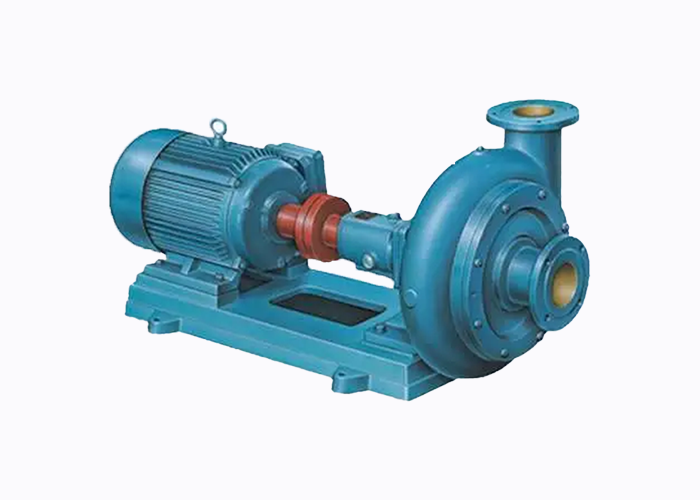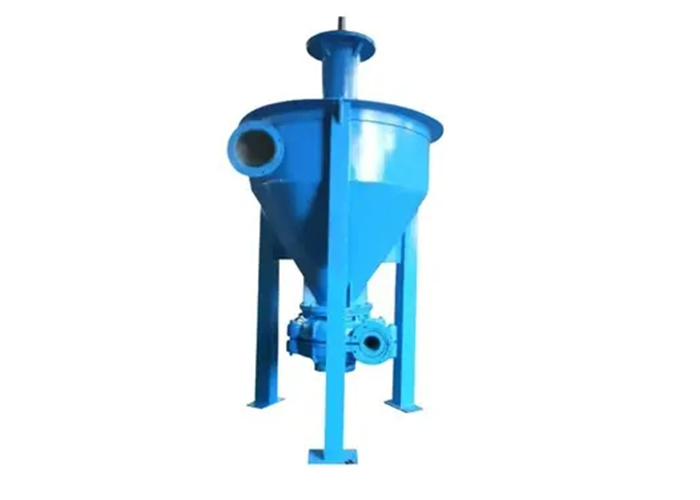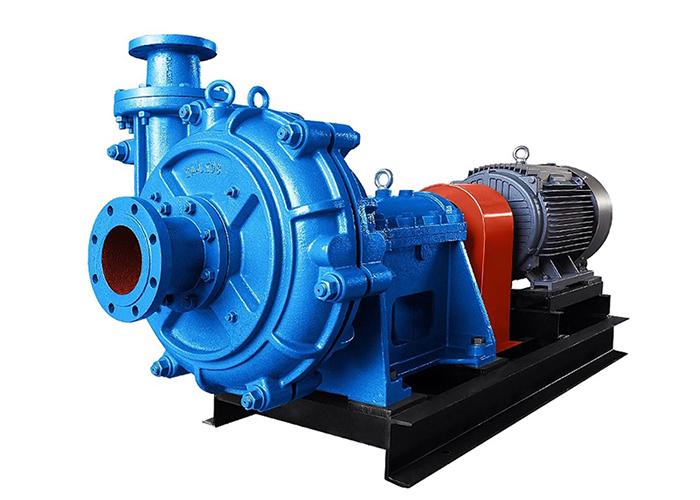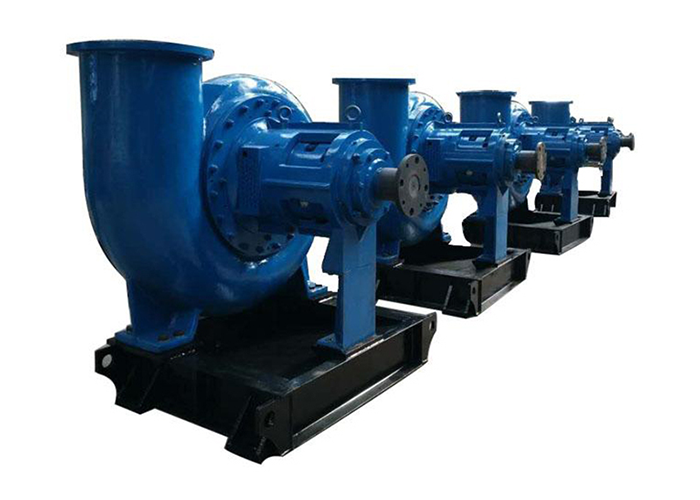Online
The problem of axial force of multistage centrifugal pump
2024-09-26
1. Problems with the axial force of centrifugal pumps:
Answer: The axial force of the pump is generated because the pressures on both sides of the impeller are unequal or the liquid pressures on both sides of the impeller are not completely symmetrical. If the liquid pressure on both sides of the impeller does not take into account the area of the shaft, and does not consider the influence of the impeller rotation on the pressure distribution, the pressure acting on the impeller is the difference between the force on the impeller disc and the force on the impeller cover, which is converted into the product of the difference between the outlet pressure and the inlet pressure and the area of the impeller cover. Because the outlet pressure is always greater than the inlet pressure, when the centrifugal pump rotates, there is a force acting on the rotor along the shaft and pointing to the inlet.
2. Problems with the axial force of centrifugal pumps:
Answer: Unbalanced axial force will increase the workload of the thrust bearing, which is not good for the bearing. At the same time, the axial force causes the pump rotor to move toward the suction port, causing vibration and may cause friction on the impeller mouth ring to damage the pump body.
3. The balancing measures for the axial force of multi-stage centrifugal pumps are:
Answer: The symmetrical arrangement of the impeller adopts several types of balancing drum devices, balancing disc devices, and balancing drums. Such as high-pressure boiler feed water pumps. The impeller is arranged symmetrically or a balancing drum device is used. The axial force cannot be completely balanced. Bearings are still required to bear the residual axial force. Multistage centrifugal pumps are more likely to use a balancing disc with automatic axial force adjustment to balance the axial force.
4. How to eliminate the axial force in a multistage centrifugal pump:
Answer: Multistage pumps generally use symmetrical installation of the balancing disc and the impeller. Single-stage pumps generally have balancing holes on the impeller. What we require is to eliminate the axial force, but if it is completely eliminated, it will also cause instability in the rotation of the rotor. Therefore, 25% of the amount will be designed during the design to allow the bearing to offset it. This is why the non-drive end bearings of multistage pumps are usually angular contact bearings, because they can withstand large axial forces.
Related Blogs

Principles and steps of pump selection
Pumps are a kind of general-purpose mechanical equipment with a wide range of applications. They are widely used in various sectors such as petroleum, chemical industry, electric power metallurgy, mining, shipbuilding, light industry, agriculture, civil and national defense, and they play an important role in the national economy. According to statistics in 2002, the output of pumps in my country reached more than 2 million units, and the power consumption of pumps accounted for more than 21% of the power consumption. Therefore, it is of great significance to greatly reduce the energy consumption of pumps for energy conservation.

Selection, installation and use of slurry pump
The following aspects should be paid special attention to when selecting, installing and using slurry pumps:

Desulfurization pump is a kind of pump with a very wide range of applications.
Desulfurization pump is a kind of pump that can adapt to various working conditions, such as conveying acid, alkaline liquid or slurry; various corrosive slurries in the smelting industry; various dilute acids in the sulfuric acid industry; various sewage in the environmental protection industry, etc. This pump is both corrosion-resistant and wear-resistant, and has a wide range of uses. It has the following characteristics:

What are the common causes and solutions for slurry pump failures?
As a professional slurry pump manufacturer, we remind you: before starting, you should open the pump inlet valve and close the pump outlet valve. Then start the pump, and then slowly open the pump outlet valve after the pump starts. The size and speed of the pump outlet valve opening should be controlled by the pump not vibrating and the motor not exceeding the rated current.

Principles and steps of pump selection
Pumps are a kind of general-purpose mechanical equipment with a wide range of applications. They are widely used in various sectors such as petroleum, chemical industry, electric power metallurgy, mining, shipbuilding, light industry, agriculture, civil and national defense, and they play an important role in the national economy. According to statistics in 2002, the output of pumps in my country reached more than 2 million units, and the power consumption of pumps accounted for more than 21% of the power consumption. Therefore, it is of great significance to greatly reduce the energy consumption of pumps for energy conservation.

Selection, installation and use of slurry pump
The following aspects should be paid special attention to when selecting, installing and using slurry pumps:

Desulfurization pump is a kind of pump with a very wide range of applications.
Desulfurization pump is a kind of pump that can adapt to various working conditions, such as conveying acid, alkaline liquid or slurry; various corrosive slurries in the smelting industry; various dilute acids in the sulfuric acid industry; various sewage in the environmental protection industry, etc. This pump is both corrosion-resistant and wear-resistant, and has a wide range of uses. It has the following characteristics:

What are the common causes and solutions for slurry pump failures?
As a professional slurry pump manufacturer, we remind you: before starting, you should open the pump inlet valve and close the pump outlet valve. Then start the pump, and then slowly open the pump outlet valve after the pump starts. The size and speed of the pump outlet valve opening should be controlled by the pump not vibrating and the motor not exceeding the rated current.
Contact Us



